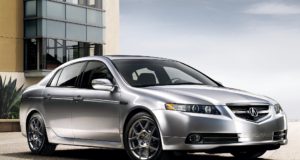Why buy used?
A used car (be it 1000 miles or 100,000 miles) is much cheaper than that same car when bought brand new off the lot (obviously). Craigslist, aka private party, lets us find these cars for the best price. Read on to learn how to become a master of the used car buying and selling process.
Finding the right car
First, find a budget that you are willing to work with. If you do not have the cash, and if the car qualifies, a bank or credit union may offer a loan.
Always refer to KBB (Kelly Blue Book) for the current private party value of the car you are purchasing. This will give you a better idea on how much you should be paying for the car, as well as potential negotiating power to lower the price.
If not familiar with cars, we suggest finding a shop to do a Pre Purchase Inspection. That way you know the mechanical condition and can use it as negotiating power. The thing to remember with all used car buying tips, you must always negotiate the price.
Pro Tip Most people expect to get lowballed, so they set the price much higher than what they would really like to get.
A Note on Smog
If you live in a state that requires a SMOG check, make sure that the seller has a smog certificate included. Verify that the smog was completed within 90 days, otherwise it is not valid for transfer of ownership (CA).
Double check to make sure the registration is current. A lot of times, people sell their car for a cheap price only because they cannot smog it due to a Check Engine Light, or other issues.
Setting up for finding the right deals
On the Craigslist page, navigate to your location’s web page, then click Cars and Trucks by Owner. In the search settings, set the range from $0 – (Your Max Limit). I like to add about 20% to my max limit to allow for cars that can be negotiated within the budget.
After you save your search settings, and refresh your page, you will see all the vehicles in your area that are for sale.
Pro Tip Save this Craigslist page to your home screen on your phone and your computer, that way its quick access and you do not have to mess with the settings again.
If you have this on your home screen you will see it more often, reminding you to check the listings and therefore increasing chances of finding the killer deal.
Contacting the seller
Remember, these used car buying tips apply for all private party car buying platforms, not just Craigslist. When I sell a car, the biggest thing I hate is when people ask “is the car still available?”.
Be polite, but do not waste anyone’s time. Contact the buyer through phone call when possible. If it’s a smokin’ deal, it will NOT last on Craigslist. The phone is the quickest and most direct method. Do not dilly dally around and have the sweet deal scooped up by a car dealer!
When buying a car, I look at the person selling me the car just as much, if not more, than the car itself. Mainly, it shows me what kind of treatment and service history the car received. If the person was older, spoke intelligently, and looked wealthy, we found that most times the car was in great shape to match.
Most Important Questions to Ask
“How long have you had the car?”
“What kind of maintenance have you done with the car”
“Why are you selling the car?”
“Are there any leaks or major mechanical problems?”
Ask these questions over the phone, and try to get a general understanding of the car’s shape before going out to see it, especially if its a long distance.
Saving time is key, you would be surprised how often people say “The car is flawless” on the ad. Asking these questions lets you determine if they are honest.
Set up an appointment to see the car if you feel like the information you’ve gathered about the car matches what you’re looking for.
Getting Ready to Meet and Test Drive
When meeting with a seller, I always bring:
Scan Tool for Monitors / Codes
Powerful Flashlight (I recommend Streamlight flashlights)
Pivoting and extendable mirror to check for leaks
My Drivers License / ID
Cash (I bring cash with me, but leave it in the car. I only do this if the amount is under $3000. Anything past that I just go to the bank with the seller and get them the cashiers check or cash when the deal is done).
Anti-Lemon Used Car Inspection Checklist
Before the meeting
Verify the sellers has the necessary paperwork, aka Pink Slip, proof of registration, and smog certificate (if required by state). Although not necessary, print out a copy of the bill of sale form.
Use CarFax or Autocheck to run a VIN background on the vehicle. This is key!
Set up personal guidelines to the maximum amount willing to spend on the car.
Make sure you have the funds ready, or instant access to them in the payment form the seller prefers.
Advise the seller you want the car to be COLD for your test drive. We want a cold engine to get a complete analysis. This is a key part to the used car inspection checklist!
At the car
Engine Inspection – Use the combination of the pivoting mirror and flashlight mentioned above to peek behind components and around the valve cover, checking for leaks. Inspect everything carefully, pay special attention to the serpentine belt area and leaks around the valve covers.
Check for Codes – Connect the scanner and make sure there are no engine codes. Make sure the monitors for smog are all completed – if not, be suspicious.
Check the body panels and paint, does it all look even? Is the texture the same everywhere? Look for panels that are a slightly different color or hue, which may indicate a sign of collision that was already repaired.
Check all the paperwork before starting the drive – make sure they own the car and that they have a pink slip with their name on it.
Check tires. Are they a matching set? Good Tread? Any signs of uneven wear? Could mean bad alignment or an accident in the past that prevents proper alignment.
Check brake pad thickness through the wheels if possible.
Check maintenance records (see if big service items have been done, like timing belt and water pump if the engine is a timing belt engine)
Check condition of oil. Open the oil filler cap and look under for any foamy, milky substances, which MAY indicate sludge or head gasket issues.
Upon vehicle start up, check the exhaust pipe for smoke. Listen to the engine for any uneven running aka “misfire” and try to smell for coolant or oil burning off which would indicate a leak.
Look over the serpentine belt(s) and all other engine components for any signs of damage, wear, or leaks.
Peek under the car to check for leaks, rust, and damage.
During the Test Drive
Engine Check – Make sure to use some power and get the engine to a high RPM (don’t redline someone else’s car). Have the windows down and constantly monitor for noise from the engine, as well as the suspension. Note how the vehicle idles, it should be smooth for the most part. Keep checking the instrument cluster for warning messages as well as overheating. Be keen to any burning oil or coolant smells.
Brake Test – Come to some stops at different speeds/intensities and try to listen for screeching or grinding noises
Alignment Check – During the test drive, while on a somewhat even road, let go of the steering wheel for a few moments and see if the vehicle drifts to one side. Keep in mind, most roads have “road crown” and will slightly cause all cars to drift to the right, but a barely noticeable amount.
Transmission Check – Make sure the test drive takes at least 15 minutes, ask the seller for permission first. This will allow the transmission to fully warm up. For automatics, issues could potentially arise online when hot, and not be present when cold. You will feel jerkiness when the auto transmission is malfunctioning. For manuals, do a clutch test by engaging 4th gear at a slow speed and go wide open throttle – see if the clutch slips (the rpms will climb extremely fast like you are in neutral).
Wiggle Test – At about 30 mph roll down your windows do a few quick left to right steering wheel maneuvers. Listen to the suspension and chassis – it should not make ANY noises while doing this.
Suspension Check – Go over some bumpy roads, and take some angled driveways / turns. Listen for any binding suspension components which will present itself with a loud knock. Also listen for failing wheel bearings by rolling up all your windows and checking for a loud whirring rotational noise.
Interior and Features – Finally, check all the features. This means A/C, reverse camera, navigation, etc. Check all window motors by rolling up and down the windows. Make sure everything is working to your desire.
During the Test Drive, DO NOT:
Drive the car like you are taking a hot lap around the Nurburgring
Go on an extended period test drive unless agreed upon with seller
Do anything that would put you or the car at risk, cosmetically or mechanically.
Remember – an honest seller will often also have a car that is in fairly decent shape. Verify that the story they tell you matches the clues you see with the car.
Ask one of the previous questions to see if the answer remains the same this time around. If something doesn’t match up, chances are the seller is hiding something, and I would investigate further.
“Gut Feeling” plays a big role in this game. Be alert to your senses and you will not buy a lemon. This is one of the key used car buying tips.
Inspecting the Car
If inspecting yourself, print out and follow our Inspection Checklist
Make sure to find a professional shop to do a Pre Purchase Inspection if you are not mechanically inclined. Anything wrong with the car, especially when NOT told about by the seller, can be potentially used to reduce the selling price or to save you from thousands of dollars in losses.
One of the used car buying tips I want you to take away from this is that any car can be a “good deal” so long as the issues within the car are discovered and price lowered to compensate.
Seal the Deal
First, before anything else, make sure they have the pink slip, as well as the smog certificate. Verify they are the owner by asking to see their ID and matching it to the name on the pink slip.
Make sure the smog certificate states that it has been completed within 90 days, otherwise its invalid for title transfer. Other states may have more paperwork so get familiar with your states requirements.
Reach a price that both parties can agree to.
Do NOT be afraid of throwing out an offer. They just spent their time showing the car, and people hate to lose time. Most times they will take a substantial amount below asking value as long as you show them things they have left out in their ad.
Sellers usually prefer cash money, but if the car is more expensive you should pay with a cashier’s check. Since there is a lot of check fraud going on, sellers are typically sketched out.
Invite them to come to the bank with you while you have the cashier’s check made out. If both seller and buyer have the same banking company, an instant transfer can also be arranged.
After completing the transaction, make sure to save the sellers phone number for any further questions. Also ask them for any sets of spare keys, and service records they have.
Thank you very much for reading















